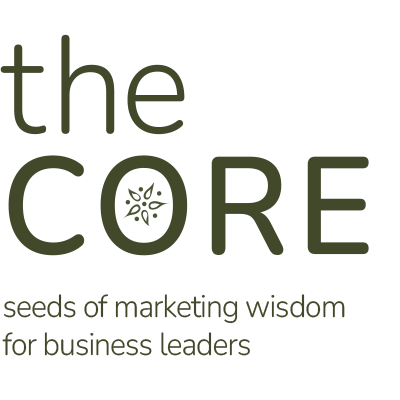If the goal of marketing is to guide people from discovering your brand for the first time to becoming a qualified potential customer, then understanding every part of that journey is essential. Most people refer to that process as the marketing funnel.
In most of the conversations I have, it’s easy for business leaders and marketing professionals to know if their marketing funnel is broken. The more difficult task is identifying which part is broken and how to fix it.
Your sales team might think you have a lead generation problem, but what is actually preventing them from hitting business development goals is that the leads they’re following aren’t ready to buy. This would be more of a lead nurturing issue.
In this post, we highlight a few areas of the marketing funnel, share specific ways you can identify the problem area, and, more importantly, tell you how to fix it.
4 Creative Ways to Be More Agile & Effective with Marketing in 2020
If there’s only one word I’m encouraging business leaders and marketers to value in 2020, it’s agility. The business world is changing faster than ever before. As marketers and sales professionals, we must stay vigilant to what today’s customers want and how they communicate. This is why being agile is the most important part of any marketing plan you could put together for 2020. It’s essential to be able to pivot without abandoning your entire strategy.
4 Creative Ways to Be More Agile & Effective with Marketing in 2020
So how can you be more agile in your marketing efforts this year? Here are a few creative practices you can consider:
- Shorten the planning process for your campaigns. If you typically plan the whole year, instead, consider planning the first six months. If you plan by quarters, try six-week campaigns. Shortening the length of your planning process will cause you to systematize the way you evaluate campaigns with a more agile approach.
- Make sure you’re continually looking at the data to analyze campaigns. Companies that adopt data-driven marketing are six times more likely to be profitable year-over-year. By letting data be the diplomat, you will be able to see what’s working and what’s not.
- Set weekly stand-up meetings with key leaders. Communication is the key to agile marketing. One recommendation I often give is to conduct 15-minute check-ins with the team to briefly discuss work from the previous day, in addition to plans for that day. This strategy allows you to address any hiccups and resolve them as quickly as possible.
- Celebrate collaboration and teamwork. A team that enjoys working together will be more willing to embrace an agile approach. In closed teams, it’s easy for people to start pointing fingers at the other. But creating a culture of collaboration and teamwork will cultivate an environment where everyone is willing to work together despite their differences or setbacks to accomplish a goal.
Taking a more agile approach to your marketing campaigns isn’t easy, especially if your team isn’t familiar with the approach. While you may not be able to direct the daily activities of your sales and marketing departments, taking time to consider these ideas will help you set the tone for greater collaboration within your team.
The Most Important Thing Sales Can Do to Convert Marketing Leads
=
There are a lot of factors that go into converting a marketing-generated lead into a sale, but there’s one element that seems to rise above the rest: quick follow up. But, don’t just take my word for it. Numerous studies outline that prompt follow up is the most important thing sales can do to convert marketing leads.
3 Reasons Why Salespeople Should Immediately Follow Up with Marketing Leads
Here are a few fascinating studies on the importance of prompt follow up …
- You should try to make contact within the first hour that a lead comes in. According to a recent study conducted by Prof. James B. Oldroyd at MIT, waiting even an hour to contact and qualify a marketing-generated lead can drastically reduce your chances of success.
- Immediately following up in the first five minutes is even more valuable. You’re 400x more likely to get a response if you do this within the first 5 minutes of them downloading the content. (Source)
- Prompt follow-up allows you to qualify leads more effectively. Companies that contact leads within an hour of receiving a query are 7X as likely to qualify the lead as those that tried to contact the customer even an hour later—and more than 60 times as likely as companies that waited 24 hours or longer. (Source)
- Prompt follow-up helps you stand out from your competitors. The average response time, among companies that contacted leads within 30 days, was 42 hours. So, taking the time to develop a quick response process will help you rise above the rest. (Source)
How to Empower Sales for Quick Follow Up with Marketing Leads
So, how do you go about empowering sales to follow up with marketing leads within an hour? Here are a few important principles to consider:
Sales and Marketing Teams Need to Be in Alignment Around the Process.
Without proper marketing and sales alignment, it’s easy for leads to fall through the cracks. By establishing processes for how and when leads are transferred to sales, each team focuses on what they do best.
Sales and Marketing Teams Need to Be in Agreement on the Definition of a Lead.
It’s important to ensure that everyone has the same definition of a lead and are aligned around focused goals. You need to make sure both teams are in agreement on things like quality vs. quantity and velocity vs. volume. Agreement on what is a marketing-qualified lead is the first step in ensuring a quick marketing-to-sales handoff.
Sales Teams Need to Be Committed to Prompt Follow-Up.
Responding within an hour can seem intimidating, especially if you’re just starting the process. Start by establishing current benchmarks for how quickly your sales team is following up on leads. From there set goals to shorten this time frame. The closer sales can get to the five-minute mark, the more likely they are to qualify and eventually convert a lead to a customer.
Sales Teams Need to Be Equipped with Information and Resources to Be Effective.
If your sales team is going to follow up immediately, then they need to know exactly what generated the lead. It also might help to equip them with resources and tools to be more effective. It could be something as simple as creating email templates your business development team can use for conversations with prospective customers. Technology also provides an opportunity to send emails on behalf of your sales team as a way to further qualify leads for them.
Why Salespeople Don’t Follow Up with Marketing Leads
There’s one thing salespeople do that frustrates marketing more than anything else. Actually, to be more clear, it’s something they don’t do. When salespeople don’t follow up with marketing leads, a division between the two teams is bound to occur.
But, what if there was a way to address this issue before we got to the board room standoff? Prior to marketing shaking their heads in frustration that sales isn’t following up with leads, it might be helpful to take a step back and ask why.
Identifying the reason salespeople don’t follow up with marketing leads and taking steps to address their issues will be a lot more effective in the long run than throwing your sales team under the bus.
It’s also worth mentioning that sales shouldn’t provide the common response that “these leads stink” when trying to determine the disconnect between sales and marketing.
3 Reasons Why Salespeople Don’t Follow Up with Marketing Leads
After dozens of conversations with business development teams over the past year, here are the three most common reasons that sales stop following up with marketing leads:They Aren’t Empowered with Enough Information
It’s important for marketing to provide salespeople with context when following up with leads. How did they show up on the lead list? Was it because of a contact form or download? What did they download? What are some of the pain points addressed in the resource? Equipping your salespeople with as much information as possible will help them create a better first impression with a prospective customer. This is why it’s important that your marketing and sales technology are in sync—so that salespeople can look back at everything a prospective customer has done (every download, website visit, etc.) when following up.They Don’t Recognize the Need to Nurture Leads
In today’s complex business world, a potential customer could be anywhere in the buying cycle when the rep calls. Some are ready to make a final decision, while others are just beginning to explore their options. Many salespeople often underestimate how long it takes for those leads to turn into sales. It’s important for marketing and sales leaders to sit down together, identify the average length of the sales cycle, and evaluate the buyer’s journey. Marketing needs buy-in from salespeople to keep circling back on leads, so that you both can get an accurate idea of how marketing leads perform over time.The Don’t Feel Equipped with Resources to Last Throughout the Sales Cycle
Salespeople can easily feel overwhelmed by the expectation to nurture hundreds of potential sales conversations on their own, especially when they don’t feel equipped with resources to guide the prospective buyer through the sales cycle. As a result, they either give up on leads or push prospective customers away because they’re trying to close the deal before the lead is ready to buy. To address this issue, it’s important for marketing to create sales-enablement tools that your team can actually use. You might not be able to force sales to use the tool you provided, but taking the time on the front end to create assets that work will save you a lot of time on fighting the eventual battle of neglecting leads. When there’s a breakdown with your business development team, the problem usually isn’t the leads. It’s how salespeople follow up on them. Make sure you address the real issue and remind both teams that sales and marketing alignment is essential for the success of both teams.How Marketing Can Create Company-Wide Collaboration
Creating a culture of teamwork and collaboration is one of the most important things you can do for your business. Here are a few reasons why…
- 75% of employers rate teamwork and collaboration as “very important.” (Source)
- 86% of employees and executives cite lack of collaboration or ineffective communication for workplace failure. (Source)
- Collaborative teams are 5x higher-performing because they feel motivated towards a common goal. (Source)
- Constantly remind employees of your mission and vision.
- Encourage creative problem solving and brainstorming.
- Share knowledge, insights, and resources across your organization.
- Celebrate the impact your company is making.
3 Ways to Improve Sales & Marketing Alignment
Getting sales and marketing on the same page isn’t easy. It takes buy-in from both teams and a lot of work to get marketing and development leaders on the same page. It requires investment and direction from senior leadership.
But, what happens after you’ve laid the initial groundwork to create that alignment? How do ensure that all the hard work you’ve done until this point isn’t completely abandoned a year from now?
How to Continually Improve Sales & Marketing Alignment
When it comes to maintaining sales and marketing alignment, the biggest factor is communication. Both teams must make sure they are communicating with and enabling the other to do their jobs.
What does this look like in real time? Here are a few tips:
- Understand the communication preferences of the other person. This sounds really simple, but it’s one of the most important keys for effective communication. If marketing is going to equip sales with real-time updates of who is on your website, make sure the information is presented in ways that are easy to understand and act upon. If you’re going to share time-sensitive information with your sales team, make sure it’s through a channel they check frequently.
- Have a one-stop shop for all marketing information and sales tools. Creating a single document or microsite that your sales team can use to access sales tools and stay informed about marketing campaigns is another key. You want to make sure you showcase the information in places where sales can easily access it in their cars before a meeting.
- Determine the right cadence for regular updates. How often should your sales teams be informed with marketing insights? How often should sales teams download what they’re learning to marketing teams? Finding the right cadence to address these questions is important. It could be a weekly stand-up meeting or bi-weekly email that prioritizes what campaigns sales should focus on.
Alignment between sales and marketing is like a road trip caravan. Both teams should stay in their individual cars but constantly stay connected about the directions they’re heading. The two-way communication between marketing and sales teams ensures you’re doing everything that you can to make sure both teams reach the intended destination.
7 Steps to Develop Your Go-to-Market Strategy
You have an idea for a great new product or service. You might have already invested time and money developing the solution. But, how do you get the word out?
Whenever launching a new product or service, the last thing you want is to waste time and resources investing in marketing tactics that don’t work. To avoid this, it’s important to craft an intentional plan that will help you rise above the noise and reach potential customers.
7 Steps to Develop Your Go-to-Market Strategy
Here are seven steps you can take to develop your go-to-market strategy for a new product or service:
- Identify your specific decision-makers and buyers. First and foremost, it’s important to define who you’re trying to serve (and who you’re not) with this new product or service. Knowing your ideal customer is foundational for marketing in ways that resonate with them. Everyone on your sales and marketing teams should take time to identify as much information as you possibly can about your target audience.
- Determine the specific pain points and messages that resonate with buyers. Knowing your ideal customer and their pain points are essential for determining the messages that will resonate with them. Before you launch your product, your sales and marketing should know (and agree) on exactly who you’re trying to reach and how you are uniquely positioned to help them.
- Understand your buyer’s journey. Intentionally considering the experience you’re creating for potential customers during the buying process is one of the most valuable things you can do before launching a product or service and is one of the best ways to spend your time. Not only will this help you create a buyer’s journey that potential customers actually enjoy, but it will also help you define the processes and systems you’ll need to create it.
- Define the relationship between sales and marketing. Marketing and sales teams should work together to achieve your goal. Without absolute clarity on the business objectives or specific products/service lines you want to grow, both sales and marketing teams are left guessing what will actually move the needle. This is true for businesses at any point in time but is especially important when launching a new product or service.
- Generate interest and develop a plan to increase brand awareness. Once you’ve laid the initial groundwork, it’s time to start thinking about your specific marketing tactics. Whenever you’re thinking about brand awareness, don’t neglect the simple but often overlooked ways to reach customers. Take time to learn from the successful campaigns and mistakes other brands make when it comes to brand awareness.
- Create content that connects emotionally with potential customers. How do you create content that cuts through the noise and actually gets read? Consider how you can use content to create emotional connections with potential customers. Begin weaving these strategies into your marketing efforts to appeal to their emotions. Brands and products that evoke our emotions—such as Apple, Disney, and Google—are always effective when launching new products or services.
- Determine how you will leverage data to evaluate and optimize your efforts. Now that you have a plan in place, the final question is: How are you going to measure and optimize along the way? Creating a data-driven marketing culture is essential for the long-term success of your product. Without knowing what you will measure before you start, you won’t know how to improve your marketing efforts along the way.
Without taking the time to think through these seven steps, it’s impossible to know if you’re chasing the wrong audience, you’re too early or too late to the market, or the market is already too saturated with similar solutions.
3 Strategies to Take Your Trade Show Marketing to the Next Level
Marketers have a love-hate relationship with conferences and trade shows. On one hand, conferences and trade shows are a lot of work. There are logistical challenges that seem to happen at every single event. Determining the ROI of having a booth in the exhibit hall or advertising in the event guide can seem impossible.
Despite the challenges, having a presence at trade shows and conferences is still one of the best ways to connect with your target accounts’ key decision-makers. According to a recent study, 82% of trade show attendees are directly involved in their teams’ purchasing decisions.
The question becomes…how do you maximize the opportunity of each trade show or event to generate some truly meaningful traction for your sales and marketing efforts?
3 Strategies to Take Your Trade Show Marketing to the Next Level
Here are three strategies and mentalities to consider as you prepare for the trade shows or conferences you’re attending this year:
- Promote an experience, not your product or service. The best way to stand out in a noisy exhibit hall is to create an experience that makes people want to stop and spend time at your booth. Creating an experience that surprises or delights attendees enables you to make much more of an emotional impact than selling them a product ever would. These experiences also make for a great word-of-mouth marketing opportunity since visitors will be more likely to tell other attendees to stop by.
- Treat everyone as if they’re already a customer. Your brand will make hundreds of new first impressions during a trade show or conference. One of the best ways to make sure it’s a positive one is to consider every person you meet as someone who’s already a customer of yours. This mindset will transform the way you interact with attendees and help create impressions that lead to connection. You never know when a seemingly unqualified prospect could get a new job and turn into a coveted lead. And, you’ll never get the chance to make another first impression with them.
- Find creative ways to grab the attention of companies in attendance. If you know a particular company or decision-maker will be at the trade show, consider how you can create intrigue with them. Whether it’s reaching out to them beforehand to stop by the booth to pick up an exclusive gift or grabbing their attention by mentioning how your service can help their specific brand, there are a lot of creative ways you can design your booth to attract specific target accounts in attendance.










